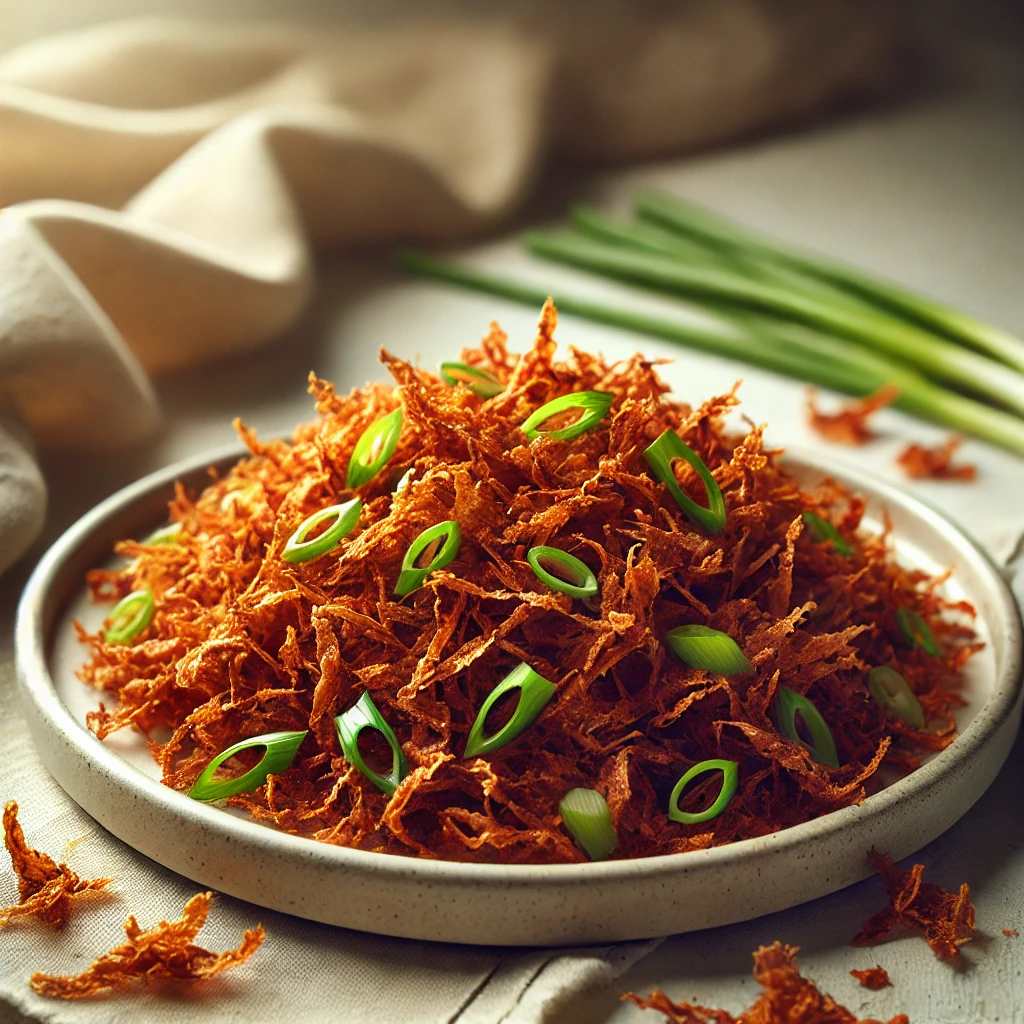Picture this: You’re at a bustling street food market, the air filled with tantalizing aromas and the sizzle of grills. Suddenly, you catch a whiff of something familiar yet intriguingly different. Your nose leads you to a food stall where a chef is expertly crafting what looks like tacos, but with a twist. Welcome to the world of Sisig Tacos, a mouthwatering fusion of Filipino and Mexican cuisines that’s taking the culinary world by storm.
Sisig, a beloved Filipino dish traditionally made with parts of a pig’s head and liver, meets the iconic Mexican taco in this innovative creation. The result? A flavor explosion that combines the savory, tangy, and spicy notes of sisig with the comforting, handheld convenience of a taco. This fusion dish not only bridges two distinct culinary traditions but also offers a unique gastronomic experience that will tantalize your taste buds and leave you craving more.
What makes Sisig Tacos truly special is their ability to cater to various dietary preferences. While the original sisig recipe calls for pork, our version can be easily adapted for those who prefer chicken or even a vegetarian option using tofu or mushrooms. This versatility ensures that everyone can enjoy this delightful fusion dish, regardless of their dietary restrictions.
Recipe Ingredients
Let’s dive into the heart of our Sisig Tacos recipe. Here’s what you’ll need to create this culinary masterpiece:
| Ingredient | Quantity | Notes |
|---|---|---|
| Pork belly | 500g | Diced into small cubes |
| Chicken liver | 200g | Finely chopped |
| Red onion | 1 medium | Finely diced |
| Garlic | 4 cloves | Minced |
| Bird’s eye chili | 2-3 pieces | Finely chopped (adjust to taste) |
| Calamansi or lime juice | 2 tablespoons | |
| Soy sauce | 1 tablespoon | |
| Vinegar | 1 tablespoon | |
| Salt | To taste | |
| Black pepper | To taste | |
| Corn tortillas | 8-10 pieces | |
| Mayonnaise | 1/4 cup | |
| Cilantro | 1/4 cup | Chopped, for garnish |
Substitution suggestions:
- For a lighter version, replace pork belly with lean pork shoulder or chicken thigh meat.
- Vegetarians can substitute the meat with firm tofu or mushrooms.
- If calamansi is unavailable, lime juice works well as a substitute.
Recipe Instructions
Now that we have our ingredients ready, let’s walk through the process of creating these delectable Sisig Tacos:
- Prepare the pork:
- In a large pot, boil the pork belly in salted water for about 30 minutes or until tender.
- Drain and let it cool before chopping into small cubes.
- Cook the liver:
- In a separate pan, sauté the chicken liver until cooked through.
- Chop finely and set aside.
- Grill the pork:
- Heat a grill or grill pan over medium-high heat.
- Grill the boiled pork belly cubes until crispy and golden brown.
- Prepare the sisig mixture:
- In a large skillet, sauté garlic and onions until fragrant.
- Add the grilled pork and chopped liver. Stir-fry for 2-3 minutes.
- Add soy sauce, vinegar, and calamansi juice. Mix well.
- Season with salt and pepper to taste.
- Add chopped chili and cook for another 2 minutes.
- Assemble the tacos:
- Warm the corn tortillas on a dry skillet or in the microwave.
- Spread a thin layer of mayonnaise on each tortilla.
- Spoon the sisig mixture onto the tortillas.
- Garnish with chopped cilantro.
- Serve and enjoy:
- Serve the Sisig Tacos immediately while they’re hot and crispy.
- Optionally, provide extra calamansi or lime wedges on the side for an extra zesty kick.
Recipe Tips & Variations
To elevate your Sisig Tacos experience, consider these helpful tips and exciting variations:
- Achieving the perfect texture: The key to great sisig is the contrast between crispy and tender textures. Make sure to grill the pork belly until it’s nicely charred for that essential crunch.
- Balancing flavors: Sisig is all about balance. Adjust the amounts of soy sauce, vinegar, and calamansi juice to find your perfect sweet-sour-salty combination.
- Spice it up: For heat lovers, add more bird’s eye chili or serve with a side of hot sauce.
- Vegetarian version: Replace the meat with diced firm tofu or chopped mushrooms. Marinate them in the same seasonings before grilling for maximum flavor.
- Seafood twist: Try using grilled chopped squid or shrimp instead of pork for a seafood sisig taco.
- Experiment with toppings: Add chopped tomatoes, pickled red onions, or a sprinkle of chicharrón (pork rinds) for extra texture and flavor.
- Make it creamy: Mix in a dollop of sour cream or Greek yogurt to the sisig for a creamy variation.
Storage instructions: Sisig is best enjoyed fresh, but if you have leftovers, store the sisig mixture separately from the tortillas in an airtight container in the refrigerator for up to 2 days. Reheat in a skillet before serving.
Nutritional Information
While Sisig Tacos are undoubtedly a treat for your taste buds, it’s also important to be mindful of their nutritional content. Here’s an approximate breakdown per serving (2 tacos):
| Nutrient | Amount |
|---|---|
| Calories | 450 |
| Total Fat | 28g |
| Saturated Fat | 9g |
| Cholesterol | 120mg |
| Sodium | 600mg |
| Total Carbohydrates | 25g |
| Dietary Fiber | 3g |
| Protein | 28g |
Please note that these values may vary depending on the specific ingredients and portions used. If you’re watching your calorie or fat intake, consider using leaner meat options or increasing the vegetable content in your tacos.
Conclusion
As we wrap up this culinary journey through Sisig Tacos, I can’t help but reflect on the beautiful harmony created when two distinct food cultures come together. This dish reminds me of my first trip to the Philippines, where I fell in love with the bold flavors of sisig, and how it instantly transported me back to my favorite taco joints in Mexico City. It’s a testament to the universal language of food and how it can bridge cultures and create new, exciting experiences.
I encourage you to embark on this flavorful adventure and try making Sisig Tacos in your own kitchen. Don’t be intimidated by the fusion aspect – embrace it! Feel free to adjust the recipe to your liking, experiment with different proteins or vegetarian options, and make it your own. The beauty of fusion cuisine lies in its flexibility and the opportunity for personal creativity.
Once you’ve tried the recipe, I’d love to hear about your experience. Did you stick to the traditional pork version, or did you venture into a vegetarian adaptation? What unique twists did you add to make it your own? Share your creations on social media and tag us – your innovative takes on Sisig Tacos might inspire fellow food enthusiasts!
If you enjoyed this culinary fusion, why not explore more of our recipes that blend different cultural flavors? From Korean-Mexican bulgogi quesadillas to Indian-Italian curry pizzas, there’s a world of exciting flavors waiting for you to discover. Check out our blog for more inspiring recipes and let your taste buds travel the globe from the comfort of your kitchen.
Remember, cooking is an adventure, and fusion dishes like Sisig Tacos are your passport to exploring new flavor territories. So fire up that grill, chop those ingredients, and get ready to impress your friends and family with this unforgettable Filipino-Mexican masterpiece. Happy cooking, and may your culinary journey be filled with delicious discoveries!
Additional Elements
Related recipes and pairings:
- Filipino Adobo Fried Rice
- Mexican Elote (Grilled Corn)
- Calamansi Margarita
Serving suggestions:
Serve your Sisig Tacos with a side of pickled papaya (atchara) for a true Filipino touch, or pair with a fresh mango salsa for a tropical twist. For beverages, a cold San Miguel beer or a tangy calamansi juice complements the flavors perfectly.
Equipment recommendations:
- A good quality non-stick skillet or cast-iron pan for cooking the sisig
- A sharp chef’s knife for chopping ingredients
- A citrus juicer for extracting calamansi or lime juice
Historical and cultural context:
Sisig originated in the Pampanga region of the Philippines, known as the country’s culinary capital. Originally a way to use all parts of the pig, sisig has evolved into a beloved national dish. By combining it with tacos, we’re not only creating a delicious meal but also paying homage to the rich culinary traditions of both the Philippines and Mexico.
Disclaimer: This recipe blog post is based on information available up to 2019. While we strive for accuracy, culinary trends and ingredient availability may have changed since then. We encourage readers to adapt the recipe according to current dietary guidelines and personal preferences. If you notice any inaccuracies, please report them so we can correct them promptly.




